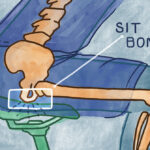Small Electric Bikes are gaining popularity, and for good reason. Many riders are finding that a compact e-bike offers unique advantages, particularly when compared to their larger counterparts. Let’s delve into why these smaller models are resonating with a growing segment of the cycling community and if a small electric bike could be the right choice for your needs.
One of the most immediately noticeable benefits of a small electric bike, especially those with 20-inch wheels or folding frames, is their enhanced maneuverability. Navigating tight spaces, whether it’s city streets, crowded bike paths, or even storing the bike at home or in a vehicle, becomes significantly easier. For riders who find larger, heavier bikes cumbersome, the nimble handling of a small electric bike can be a game-changer. Furthermore, the lower step-over height common in many small e-bikes is a boon for riders seeking ease of mounting and dismounting.
Portability is another key advantage. Folding electric bikes, a subset of small electric bikes, take this benefit to the extreme. They can be collapsed into a compact form, making them ideal for commuters who combine cycling with public transport, travelers who want to bring their bike along, or anyone with limited storage space. Even non-folding small electric bikes are generally lighter and easier to lift and transport compared to full-size models.
However, it’s important to consider potential trade-offs. Traditionally, smaller wheels were associated with reduced rolling efficiency and a potentially twitchier ride feel, especially at higher speeds. Without electric assist, a small wheeled bike might require more effort to maintain speed and cover long distances compared to a 26-inch or 700c wheeled bike. Gearing also plays a crucial role; smaller wheels require appropriately adjusted gearing to achieve higher speeds.
This is where the electric assist system comes into play. The motor largely mitigates the traditional drawbacks of smaller wheels. The electric power compensates for any perceived loss in rolling efficiency, making it easier to maintain speed and tackle hills. While the unpowered characteristics of a small wheeled bike might differ from a larger one, the addition of electric assist levels the playing field significantly in terms of ride experience and usability for many riders.
Ultimately, the best type of electric bike depends on individual needs and priorities. If maneuverability, ease of storage, and portability are high on your list, a small electric bike is definitely worth considering. They are particularly well-suited for urban environments, commuting, recreational riding on paved paths, and for those who appreciate a bike that’s easy to handle and transport. As with any bike purchase, test riding both small and larger electric bikes is recommended to determine which style best fits your riding style and preferences.

